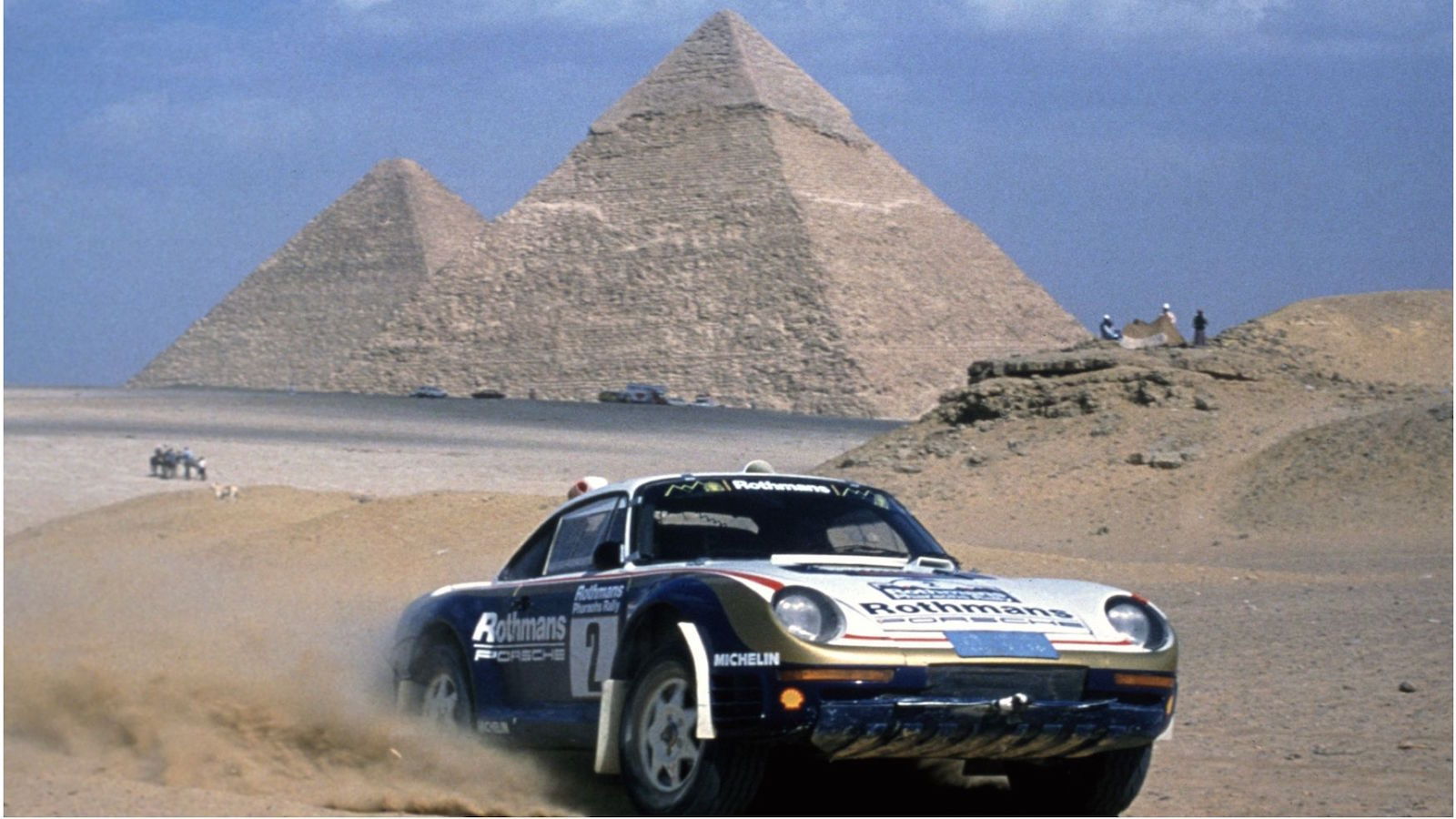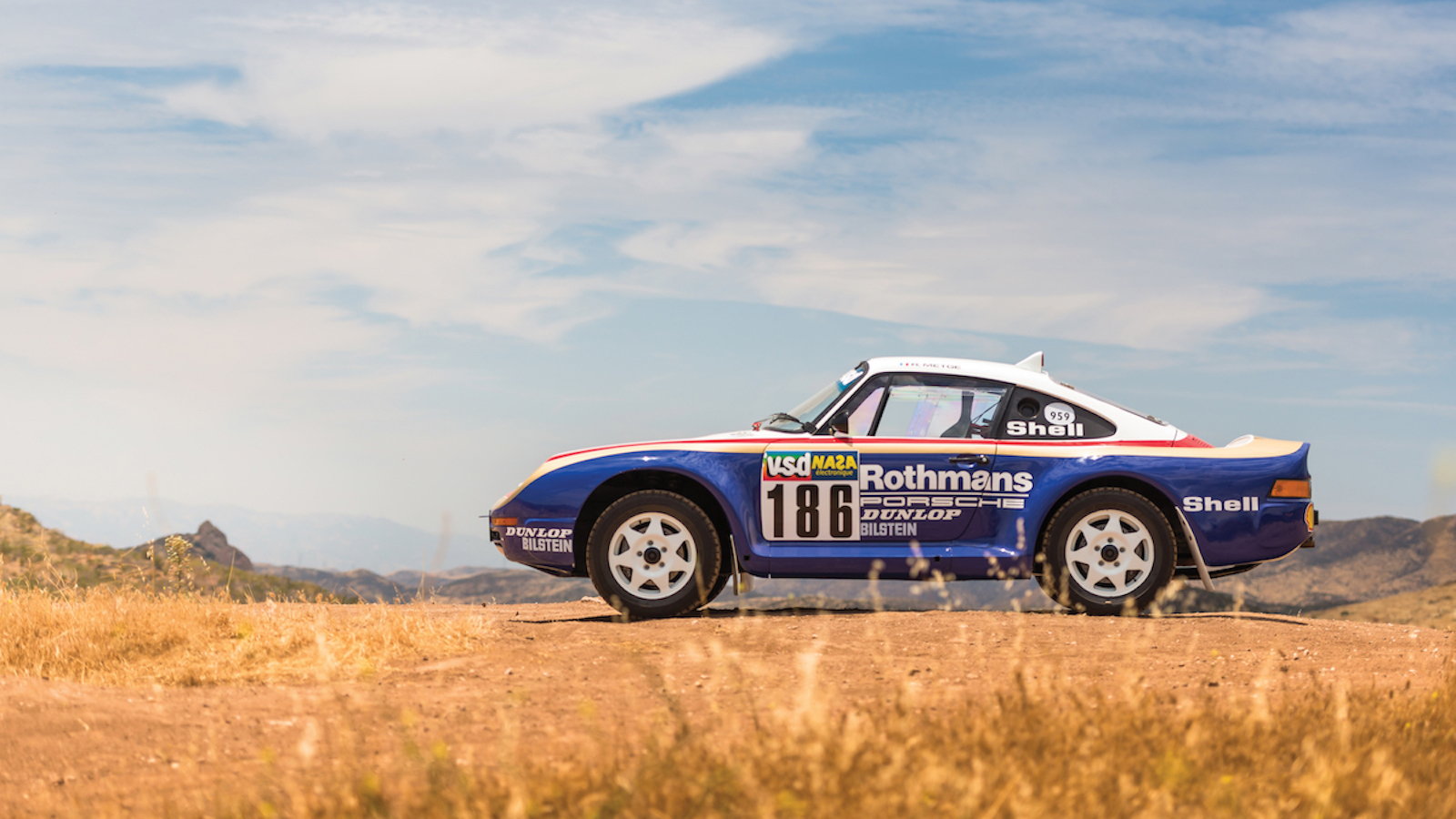6 Amazing Facts About the Porsche 959 Paris-Dakar
Daily Slideshow: These rally cars were way more than just modified supercars.














Born a Legend
Born from the desire to compete in the Group B rally series the 959 Dakar was based on all ideal principle: four-wheel-drive combined with mid-engine balance and a manual transmission. It was a highly advanced concept that would come to fruition after the snows of winter melted in 1983 with one small caveat: the engine would end up being rear mounted as is the tradition in Porsche engineering. The drag coefficient was an impressive 0.32 with a solid chassis designed from the ground up. This wasn’t just another modified 911.
Durability Over Outright Power
Recognized for its advanced technology, the 959 road car was one of the most cutting-edge supercars at the time, thanks to a complex turbocharged engine. In the rally car, however, simplicity takes precedence over outright power, with engineers opting to use a naturally aspirated 3.2-liter engine. This can largely be attributed to the need for a simple engine from a service standpoint, as well as reliability. Rally heat and 80s turbocharging in a development car probably wouldn’t have been a smart move.
image courtesy of RM Sothebys
>>Join the conversation about the Porsche 959 Dakar racer right here in Rennlist.com.
Technical Challenges
These rally cars face immeasurable challenges on the race course. For starters, the terrain itself required specialized suspension that allowed for longer travel: a deviation that does not need to occur in the road going version of the 959. Heat across the desert reaches temperatures that destroy engine components, which required Porsche to slightly detune the powerful engine in order for it to last. Dust and silt get into every crevice of a machine in this race, which made finishing it a feat of engineering and driver prowess alike.
>>Join the conversation about the Porsche 959 Dakar racer right here in Rennlist.com.
Base of Departure
Wheelbase was shortened to 89.5 inches rather than the standard 95.9 inches that many 911s have been tuned to. This short wheelbase served two purposes: it improved low-speed nimbleness, and it helped the car navigate hilly terrain. As a result, the vehicle has dimensions that look slightly off compared to a normal Carrera. It’s an aggressive stance that serves a very direct purpose: get through the most challenging rally on earth in record time.
Image courtesy of RM Sothebys
>>Join the conversation about the Porsche 959 Dakar racer right here in Rennlist.com.
Racing Suspension Design
The McPherson strut is very common in rally cars, due to the fact that they must be based on production cars. Group B was different in allowing designers carte blanche with their engineering dreams. One example of this was the fact that the 959 featured double wishbone suspension all the way around instead of the typical suspension design we see in the WRC.
Image Courtesy of RM Sothebys
>>Join the conversation about the Porsche 959 Dakar racer right here in Rennlist.com.
Gearing Advantage
When you’re thrashing through the desert with 390 horsepower, you need to take advantage of all the gearing you can. No 180mph sprints will be done, so there is no need to stretch out every rpm you can for max speed. Porsche was well aware of this and as such, they decided to gear the 959 Dakar to a top speed of 149mph. Anywhere close to this in the desert is more than enough to get a driver into major trouble should anything go wrong. Rene Metge, one of the drivers, had no such problems, as he managed to win the race with Jacky Ickx coming in 6th. In later years, they would manage to a 1-2 finish in dominant fashion.
image courtesy of RM Sothebys
>>Join the conversation about the Porsche 959 Dakar racer right here in Rennlist.com.
Rising Value
The value of these cars has risen exponentially higher, with race winning cars selling for more than $5,000,000 through auction houses like RM Sotheby. When you think about the monumental achievement that Porsche took home with the creation of this car, it is no surprise that avid collectors will pay top dollar to own a piece of the company’s long and illustrious racing pedigree. It’s an icon that looks good standing still, and a lust-worthy machine that took Porsche to the hills of a desert and back to tell the tale.
image courtesy of RM Sothebys
>>Join the conversation about the Porsche 959 Dakar racer right here in Rennlist.com.
For help with your maintenance and repair projects, please visit our How-to section in the forum.
